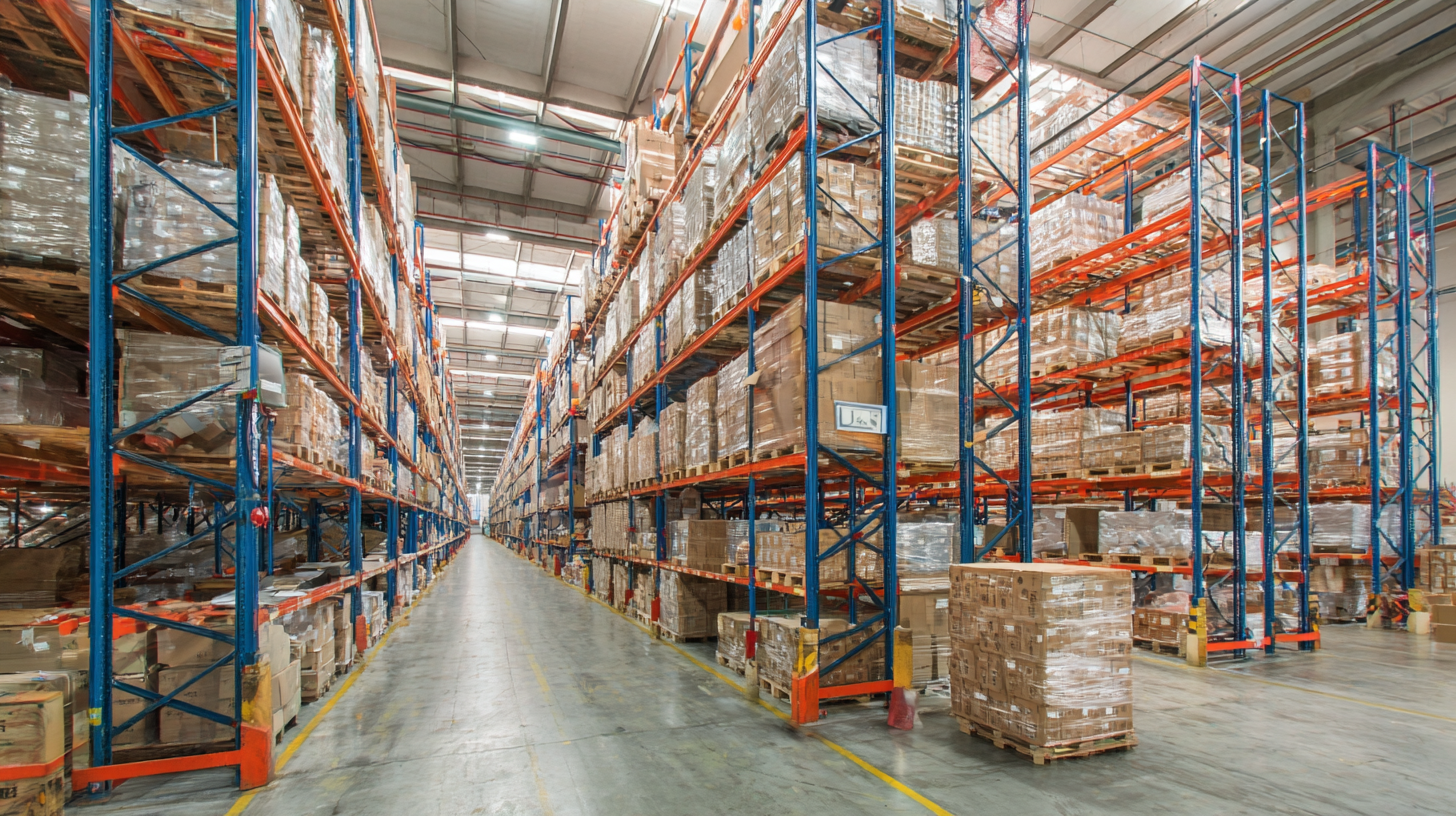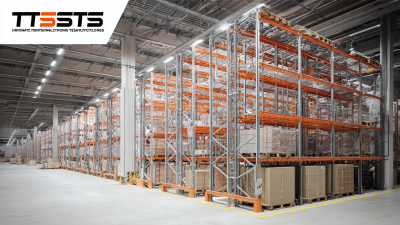How to Maximize Storage Space with Warehouse Shelving Racks for Optimal Efficiency
In the ever-evolving landscape of logistics and storage management, maximizing available space is essential for operational efficiency. One of the most effective strategies to achieve this is through the strategic implementation of Warehouse Shelving Racks. These versatile storage solutions not only help organize merchandise but also optimize the use of vertical space, enabling businesses to increase their storage capacity without the need for substantial renovations or expansions. By understanding how to effectively deploy Warehouse Shelving Racks, companies can streamline their inventory management processes and enhance accessibility to products, ultimately leading to improved productivity and reduced retrieval times. This guide will explore practical tips and best practices for utilizing Warehouse Shelving Racks to create an efficient and organized warehouse environment, ensuring that your storage needs are met while maximizing every inch of available space.

Choosing the Right Type of Warehouse Shelving Racks for Your Needs
Selecting the right type of warehouse shelving racks is crucial for maximizing storage space and enhancing operational efficiency. According to the "2022 Warehouse Management Systems Report" by WiseGuyReports, integrating efficient shelving can increase inventory accessibility by up to 30%, ultimately streamlining picking and packing processes. Options such as selective pallet racks, drive-in racks, and cantilever racks each serve different warehouse needs. For instance, selective racks provide easy access to all pallets, making them ideal for diverse inventory, while drive-in racks are suited for high-density storage of similar products.
Tips: When choosing shelving, consider the weight capacity and the materials of the shelves. For heavier items, industrial-grade steel racks are recommended, whereas lighter items can be stored on particle board shelves. Ensure that the shelving layout allows for proper airflow and product visibility.
Understanding the specific requirements of your warehouse environment is essential. A study by the National Institute of Standards and Technology indicates that optimizing shelving based on load characteristics not only improves efficiency but can also reduce operational costs by up to 20%. Evaluate your inventory turnover rate as well; high-turnover items should be placed at eye level on more accessible racks to facilitate faster processing.
Maximizing Vertical Space: Strategies for Effective Shelf Placement
 Maximizing vertical space is crucial for optimizing warehouse efficiency, as effective shelf placement can significantly improve both accessibility and storage capacity. According to a report by the Material Handling Institute, utilizing vertical space can increase storage capacity by up to 50%. Implementing tall shelving units and strategically placing them can help to exploit unused vertical areas, which is often overlooked in warehouse design.
Maximizing vertical space is crucial for optimizing warehouse efficiency, as effective shelf placement can significantly improve both accessibility and storage capacity. According to a report by the Material Handling Institute, utilizing vertical space can increase storage capacity by up to 50%. Implementing tall shelving units and strategically placing them can help to exploit unused vertical areas, which is often overlooked in warehouse design.
When determining shelf placement, consider the weight and frequency of item retrieval. The Pareto Principle, also known as the 80/20 rule, suggests that 80% of your needs may come from just 20% of your inventory. Position your fast-moving items at eye level on easily accessible shelves to minimize retrieval time and maximize employee efficiency. Moreover, integrating adjustable shelving can allow for adapting to fluctuating inventory sizes, thus enhancing storage flexibility and reducing costs associated with reorganization. Ultimately, adopting a strategic approach to shelf placement ensures that businesses can use every inch of their vertical space efficiently.
Organizing Inventory: Best Practices for Shelf Arrangement
Organizing inventory effectively is crucial for warehouses aiming to maximize storage space and operational efficiency. Smart shelving solutions have become increasingly popular as they adapt to modern needs, allowing for better inventory management. According to industry reports, the smart shelves market is projected to grow significantly, with estimates indicating a compound annual growth rate (CAGR) of over 15% by 2026. These shelves not only save space but also incorporate technology that helps track inventory levels in real-time.
When arranging shelves, it is essential to identify the most frequently accessed items and position them at eye level or within easy reach. Grouping similar products together can further streamline retrieval processes. Implementing a labeling system can also enhance organization, making it simple for employees to locate and replenish stock quickly.
To maximize the efficiency of your shelving system, consider utilizing adjustable shelving units that can be reconfigured based on changing inventory demands. Additionally, integrating smart technology like RFID tags can provide valuable data on stock movement, ensuring that shelves are optimally stocked, thereby reducing errors and improving overall productivity.

Implementing Modular Racking Systems for Flexibility and Efficiency
Implementing modular racking systems is crucial for businesses aiming to optimize storage efficiency and adapt to changing inventory needs. According to a report by the Warehousing Education and Research Council, adopting modular shelving can increase warehouse storage capacity by up to 30%. This flexibility allows businesses to reconfigure storage layouts quickly in response to fluctuating product sizes or quantities, avoiding wasted space and enhancing operational efficiency.
Furthermore, modular racking systems are designed to maximize vertical space, which is often underutilized in warehouses. The Modern Materials Handling magazine highlights that 57% of warehouse managers report that maximizing vertical space directly contributes to improved warehouse performance. By utilizing adjustable shelves and racks that can be easily relocated or resized, companies can streamline their inventory management, reduce labor costs, and improve order fulfillment times. Investing in such systems not only caters to immediate storage needs but also prepares businesses for future scalability in a dynamic market environment.
How to Maximize Storage Space with Warehouse Shelving Racks for Optimal Efficiency
| Storage Type | Dimensions (LxWxH) | Weight Capacity | Material | Modular Flexibility | Usage Scenario |
|---|---|---|---|---|---|
| Boltless Shelving | 48"x24"x72" | 800 lbs | Steel | High | Ideal for heavy-duty storage |
| Wire Shelving | 60"x24"x72" | 600 lbs | Metal | Medium | Perfect for food and pharmaceutical items |
| Steel Pallet Rack | 96"x42"x96" | 2000 lbs | Steel | High | Best for large pallets and warehouse |
| Corner Shelving | 36"x36"x72" | 400 lbs | Wood | Low | Ideal for small spaces and retail |
| Mobile Shelving | 72"x24"x72" | 500 lbs per shelf | Metal | High | Useful for archives and libraries |
Utilizing Accessories to Enhance Warehouse Shelving Functionality
Enhancing warehouse shelving functionality is crucial for optimizing storage efficiency. According to a report by the Wire Association International, nearly 60% of warehouses struggle with space management, indicating a significant opportunity to improve efficiency through the use of appropriate accessories. Accessories such as shelf dividers, bins, and labels can dramatically streamline organization. For example, the implementation of bin systems can increase retrieval speed by up to 30%, allowing workers to locate items swiftly and minimizing downtime.
Incorporating modular shelving and adjustable racks further enhances functionality by adapting to varying inventory types and sizes. A study from the Warehousing Education and Research Council reveals that adjustable shelving systems can improve space usage by 40% as they allow for reconfiguration based on stock fluctuations. Additionally, accessories like anti-tip brackets and safety guards not only maximize space but also ensure the safety of warehouse personnel and compliance with safety regulations. By strategically utilizing these accessories, warehouse operators can significantly elevate their storage efficiency and maintain a seamless workflow.
Related Posts
-

Unlock Global Supply Chain Success with China's Premier Commercial Storage Racks
-

Ultimate Guide to Your Warehouse Shelving Checklist for Optimal Storage Solutions
-

Future Warehouse Racking Trends in 2025 and Its Advantages for Global Buyers
-

Innovative Technologies Shaping Best Warehouse Shelving Systems in 2025 and How to Adapt
-

Unlocking Efficiency with the Best Warehouse Pallet Racking System Benefits for Global Buyers
-

Exploring the Unique Features and Applications of Best Warehouse Storage Racks: A Comprehensive How-To Guide

